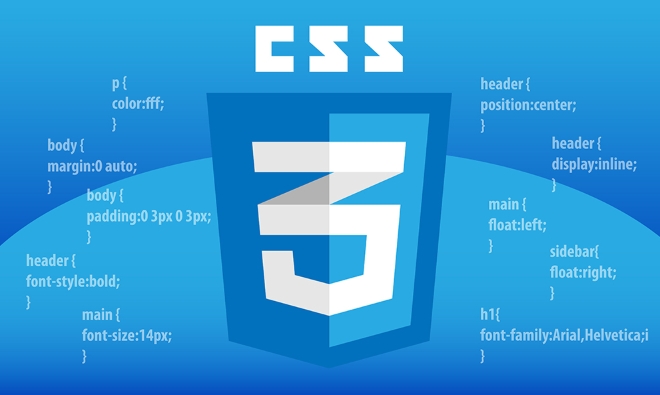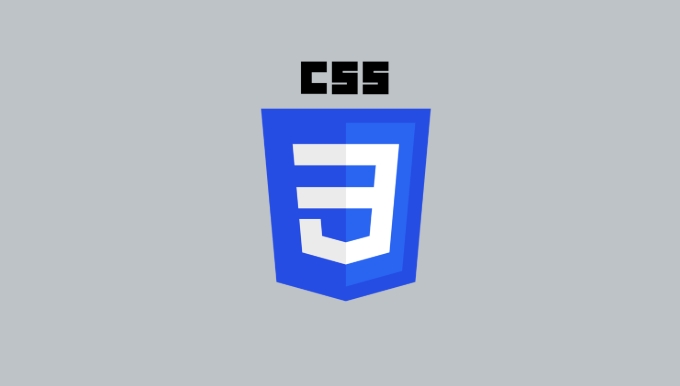Using CSS preprocessors can improve maintainability and clarity of style sheets. 1. Nesting rules make the structure more intuitive, such as writing ul, li and a styles in .nav according to HTML hierarchy relationships, but the nesting should not exceed three layers; 2. Variables and Mixin improve reusability, such as using $primary-color to define the main tone, or using @mixin to encapsulate common style blocks to reduce duplicate code; 3. Modularly organize the code structure, merge multiple small files through @import, and split styles according to functions, which facilitates team collaboration and post-maintenance.

When writing CSS, it is certainly OK to write native code directly, but using a preprocessor (such as Sass, Less, or Stylus) will make your style sheet clearer and easier to maintain. If you find that your CSS is getting messier or that you repeat too much code, it may be time to consider using a preprocessor.

Nesting rules make the structure more intuitive
A major advantage of CSS preprocessors is that they support nesting, which can make your code structure closer to the HTML hierarchy. For example, if you write a navigation menu, the HTML contains ul and the Li contains a. At this time, you can also write it in the preprocessor according to this structure:

.nav {
ul {
list-style: none;
padding: 0;
}
li {
display: inline-block;
}
a {
text-decoration: none;
color: #333;
}
}The advantage of writing this way is that it is clear logic and you can tell which styles belong to which parent level at a glance. However, be careful not to embed too deeply. Generally, within three layers is enough, otherwise it will be difficult to maintain.
Variables and Mixin improve reusability
When writing CSS, values ??such as color and font size are often used in multiple places. If you want to change the main color tone in the future, it will be very troublesome to find replacements one by one. Using variables can solve this problem:

$primary-color: #3498db;
.button {
background-color: $primary-color;
}In the future, as long as the value of the meter is changed, all referenced places will change. In addition, commonly used style blocks such as buttons and shadows can be encapsulated with Mixin and called directly when needed:
@mixin rounded($radius) {
border-radius: $radius;
}
.card {
@include rounded(8px);
}This not only reduces duplicate code, but also improves readability and maintenance efficiency.
Organize code structures using modularity
In large projects, it is obviously not appropriate to write all the styles in one file. The preprocessor supports merging multiple small files into one output file through @import , so that styles can be split by function or component:
For example, you can have _variables.scss put variables, _buttons.scss put button style, and then uniformly introduce them in the main file:
@import 'variables'; @import 'buttons'; @import 'layout';
This method makes team collaboration smoother and facilitates later search and modification. Note that the file name is underlined before _ tells the preprocessor that this is a "partial file" and will not output CSS separately.
Basically that's it. The key to making good use of preprocessors is not how much syntax you have learned, but rather organizational structure and improving code reuse rate. At first you may feel like it’s unnecessary, but once the project gets bigger, you will know how easy it is.
The above is the detailed content of Using CSS Preprocessors effectively to write CSS. For more information, please follow other related articles on the PHP Chinese website!

Hot AI Tools

Undress AI Tool
Undress images for free

Undresser.AI Undress
AI-powered app for creating realistic nude photos

AI Clothes Remover
Online AI tool for removing clothes from photos.

Clothoff.io
AI clothes remover

Video Face Swap
Swap faces in any video effortlessly with our completely free AI face swap tool!

Hot Article

Hot Tools

Notepad++7.3.1
Easy-to-use and free code editor

SublimeText3 Chinese version
Chinese version, very easy to use

Zend Studio 13.0.1
Powerful PHP integrated development environment

Dreamweaver CS6
Visual web development tools

SublimeText3 Mac version
God-level code editing software (SublimeText3)

Hot Topics
 How can I include CSS only on some pages?
Jun 11, 2025 am 12:01 AM
How can I include CSS only on some pages?
Jun 11, 2025 am 12:01 AM
There are three ways to selectively include CSS on a specific page: 1. Inline CSS, suitable for pages that are not frequently accessed or require unique styles; 2. Load external CSS files using JavaScript conditions, suitable for situations where flexibility is required; 3. Containment on the server side, suitable for scenarios using server-side languages. This approach can optimize website performance and maintainability, but requires balance of modularity and performance.
 Flexbox vs Grid: Understanding the Key Differences in CSS Layout
Jun 10, 2025 am 12:03 AM
Flexbox vs Grid: Understanding the Key Differences in CSS Layout
Jun 10, 2025 am 12:03 AM
Flexboxisidealforone-dimensionallayouts,whileGridsuitstwo-dimensional,complexlayouts.UseFlexboxforaligningitemsinasingleaxisandGridforprecisecontroloverrowsandcolumnsinintricatedesigns.
 Creating an Auto-Closing Notification With an HTML Popover
Jun 10, 2025 am 09:45 AM
Creating an Auto-Closing Notification With an HTML Popover
Jun 10, 2025 am 09:45 AM
The HTML popover attribute transforms elements into top-layer elements that can be opened and closed with a button or JavaScript. Popovers can be dismissed a number of ways, but there is no option to auto-close them. Preethi has a technique you can u
 What is 'render-blocking CSS'?
Jun 24, 2025 am 12:42 AM
What is 'render-blocking CSS'?
Jun 24, 2025 am 12:42 AM
CSS blocks page rendering because browsers view inline and external CSS as key resources by default, especially with imported stylesheets, header large amounts of inline CSS, and unoptimized media query styles. 1. Extract critical CSS and embed it into HTML; 2. Delay loading non-critical CSS through JavaScript; 3. Use media attributes to optimize loading such as print styles; 4. Compress and merge CSS to reduce requests. It is recommended to use tools to extract key CSS, combine rel="preload" asynchronous loading, and use media delayed loading reasonably to avoid excessive splitting and complex script control.
 How to use Lotties in Figma
Jun 14, 2025 am 10:17 AM
How to use Lotties in Figma
Jun 14, 2025 am 10:17 AM
In the following tutorial, I will show you how to create Lottie animations in Figma. We'll use two colorful designs to exmplify how you can animate in Figma, and then I'll show you how to go from Figma to Lottie animations. All you need is a free Fig
 Breaking Boundaries: Building a Tangram Puzzle With (S)CSS
Jun 13, 2025 am 11:33 AM
Breaking Boundaries: Building a Tangram Puzzle With (S)CSS
Jun 13, 2025 am 11:33 AM
We put it to the test and it turns out Sass can replace JavaScript, at least when it comes to low-level logic and puzzle behavior. With nothing but maps, mixins, functions, and a whole lot of math, we managed to bring our Tangram puzzle to life, no J
 External vs. Internal CSS: What's the Best Approach?
Jun 20, 2025 am 12:45 AM
External vs. Internal CSS: What's the Best Approach?
Jun 20, 2025 am 12:45 AM
ThebestapproachforCSSdependsontheproject'sspecificneeds.Forlargerprojects,externalCSSisbetterduetomaintainabilityandreusability;forsmallerprojectsorsingle-pageapplications,internalCSSmightbemoresuitable.It'scrucialtobalanceprojectsize,performanceneed
 Does my CSS must be on lower case?
Jun 19, 2025 am 12:29 AM
Does my CSS must be on lower case?
Jun 19, 2025 am 12:29 AM
No,CSSdoesnothavetobeinlowercase.However,usinglowercaseisrecommendedfor:1)Consistencyandreadability,2)Avoidingerrorsinrelatedtechnologies,3)Potentialperformancebenefits,and4)Improvedcollaborationwithinteams.






